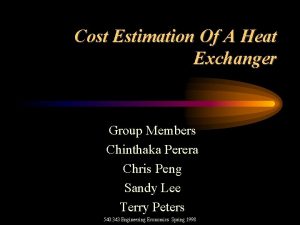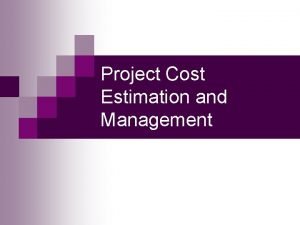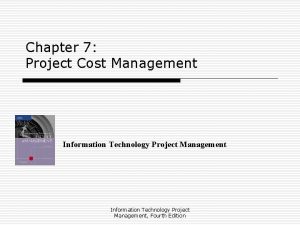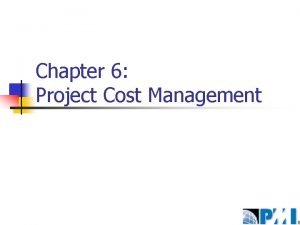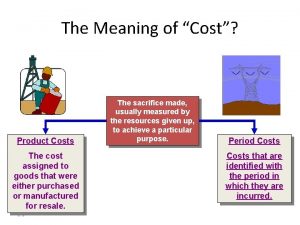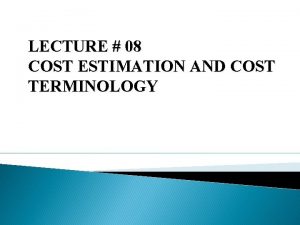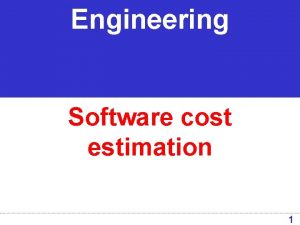LECTURE 08 COST ESTIMATION AND COST TERMINOLOGY COST







- Slides: 7

LECTURE # 08 COST ESTIMATION AND COST TERMINOLOGY

COST ESTIMATION �A process by which present and future cost consequences of engineering designs are forecast. � Whenever an engineering economic analysis is performed for a major capital investment, the cost estimating efforts for the analysis should be an integral part of comprehensive planning and design process.

TOP DOWN AND BOTTOM APPROACH FOR COST ESTIMATION � There are two fundamentals approaches to cost estimating ◦ Top Down üThis approach basically uses historical data from similar engineering projects to estimate the cost. ◦ Bottom Up üThis is more detailed method of cost estimating. This method attempts to break down a project into small, manageable units and to estimate their cost and other economic consequences.

COST TERMINOLOGIES § § Fixed Cost üA fixed cost is a cost that does not change with an increase or decrease in the amount of goods or services produced or sold. Variable Cost üA variable cost is a corporate expense that changes in proportion to production output. Variable costs increase or decrease depending on a company's production volume; they rise as production increases and fall as production decreases.

Cont. . § § Incremental Cost üAn incremental cost is the amount of additional expenses a company incurs when they produce one additional unit of product or service. Sunk Cost ü A sunk cost (also known as retrospective cost) is a cost that has already been incurred and cannot be recovered.

Cont. . § Opportunity Cost üIt is defined as the value and profit of something that must be forgone top acquire something else. § Life Cycle Cost üIt refers to the cost of product that includes all possible costs that may be incurred during the life cycle of the product

PRESENT ECONOMY STUDIES � When the alternatives for accomplishing a specific task are being compared over one year or less and the influence of time on money can be ignored, engineering economic analysis are referred to as present economy studies. � Rule 1 - When revenues and other economic benefits are present and vary among alternatives, choose the alternative that maximizes overall profitability. � Rule 2 - When revenues and other economic benefits are not present or are constant among all alternatives, consider only the cost and select the alternatives that minimizes total cost.

